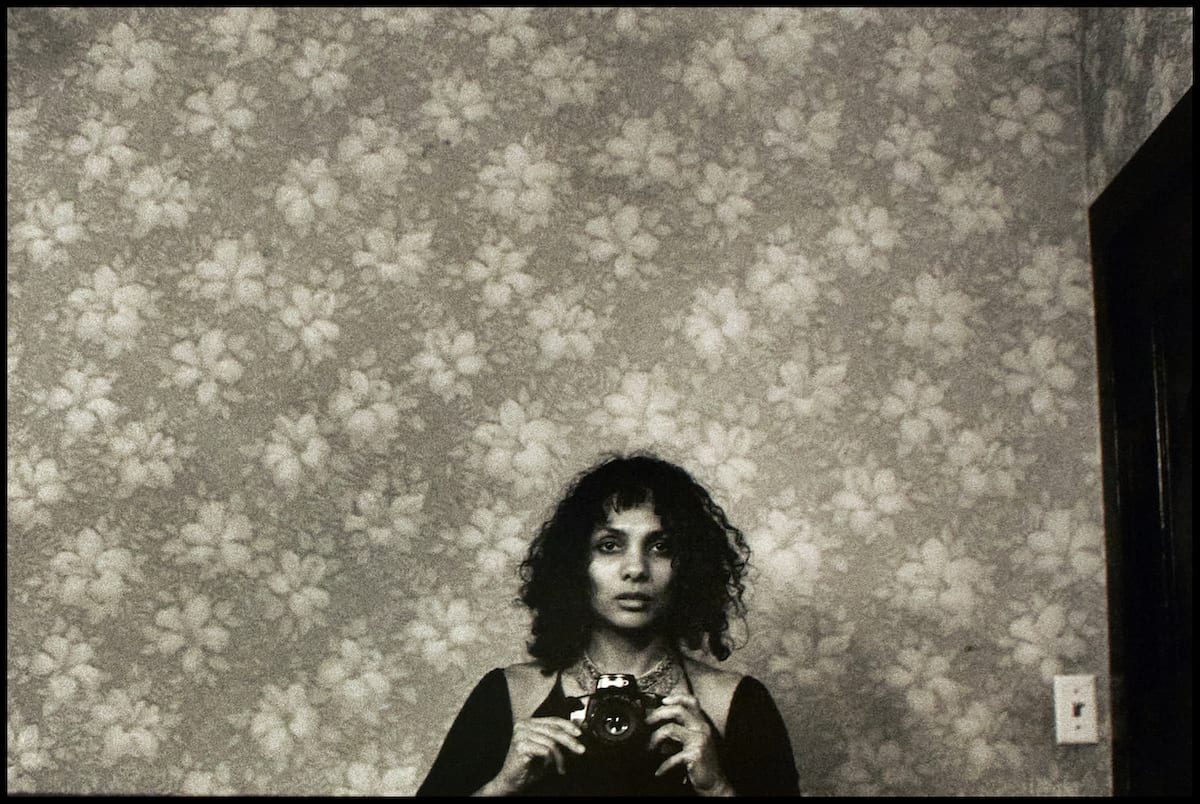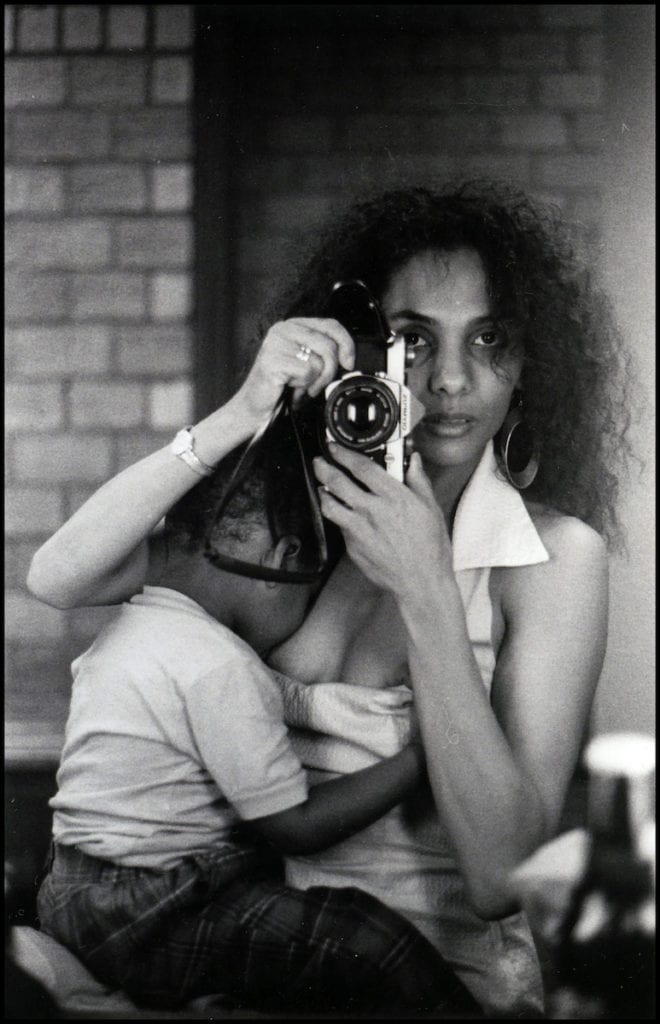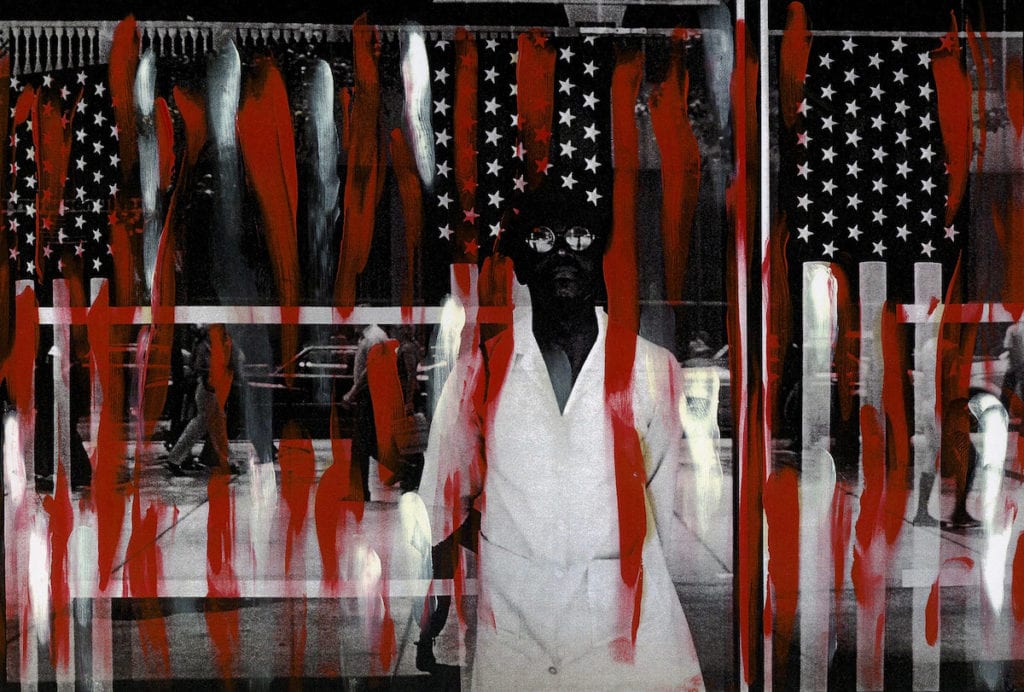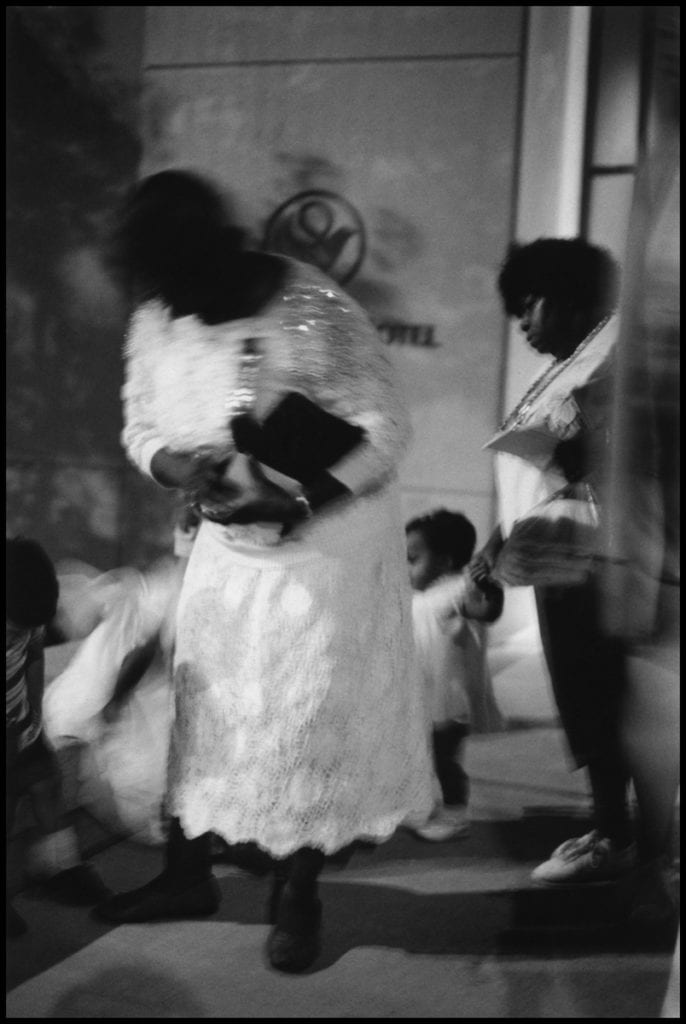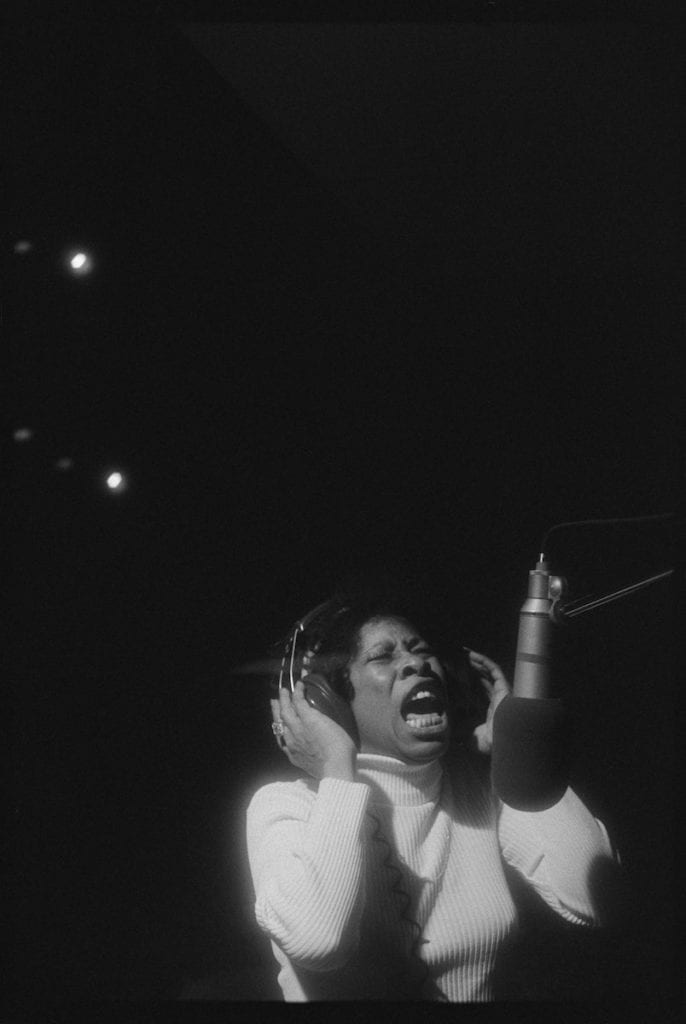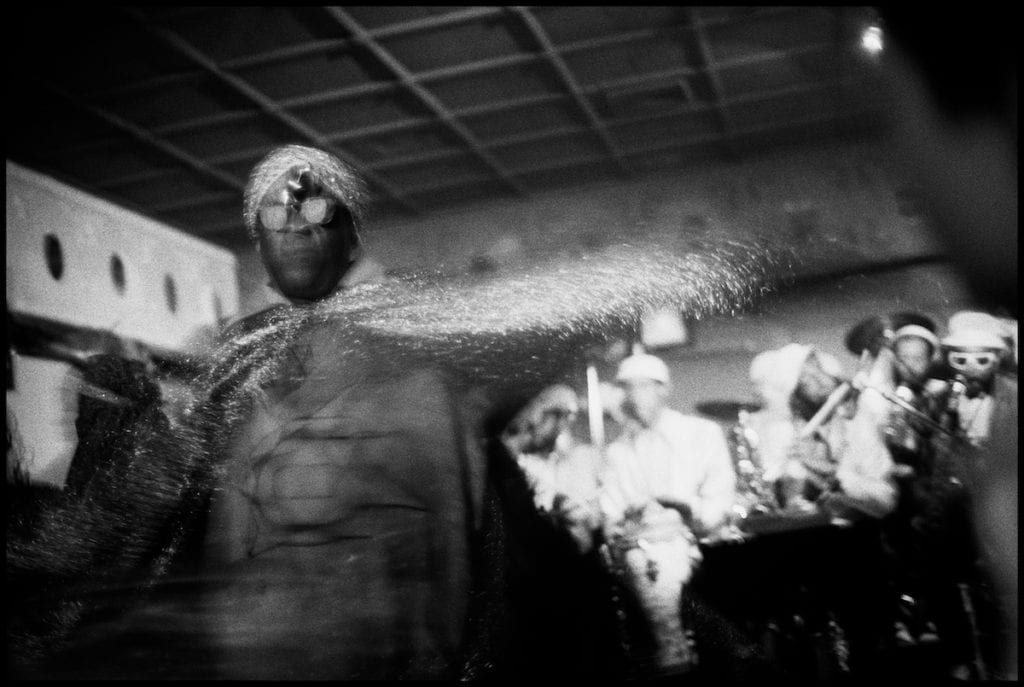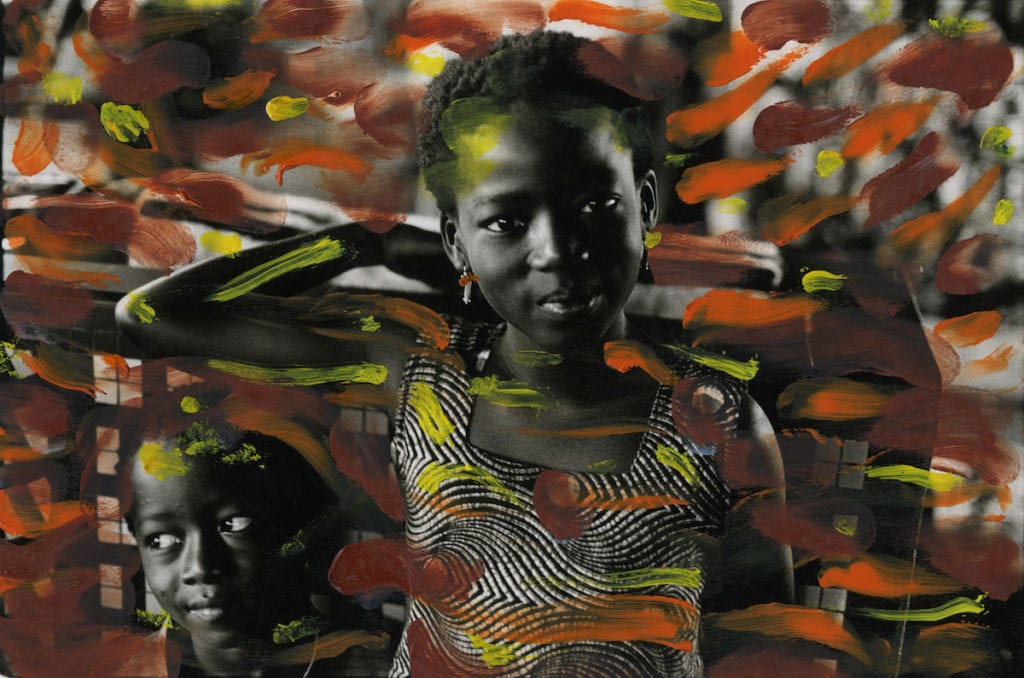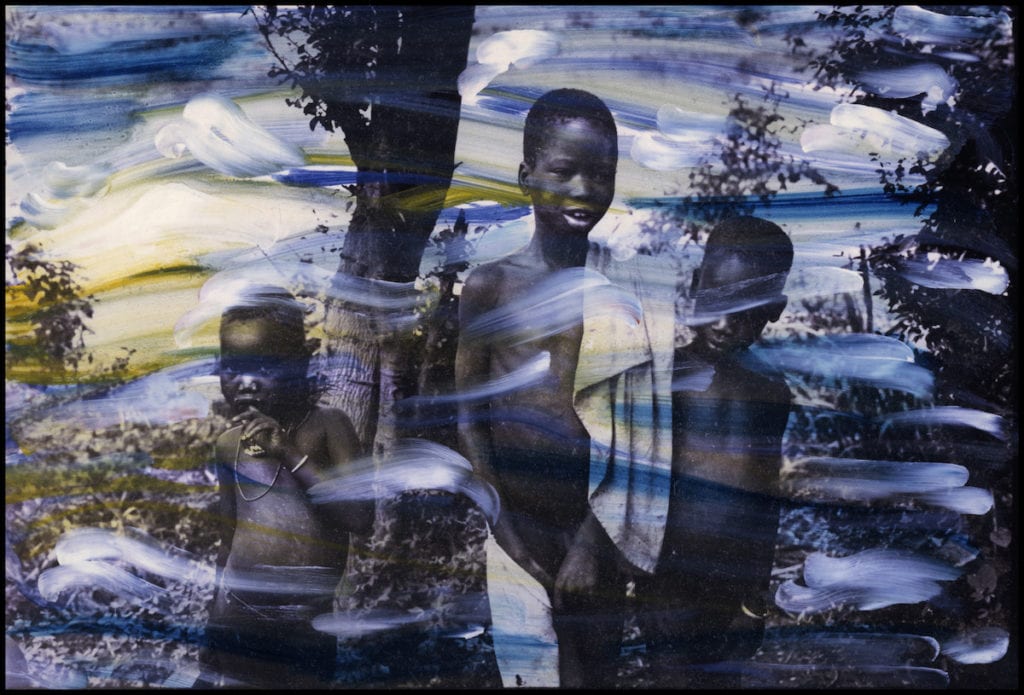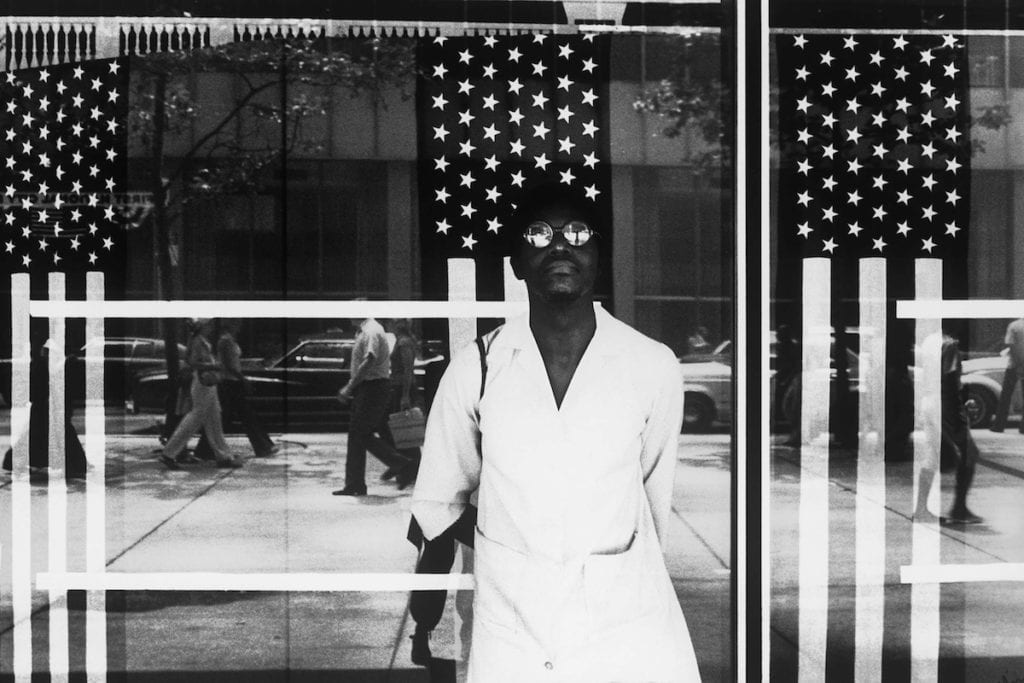As her solo exhibition, Painting with Light, reflects on the richness of Smith’s oeuvre, the artist discusses her practice and the irony of looking back now
Ming Smith’s words are rich with wisdom — replete with the kind of knowledge and perspective that only comes from decades of lived experience. “It seems ironic to be looking back now,” she tells me, “although some things have changed, many things remain the same.”
When I speak to Smith, on the phone from her home in Harlem, New York, it is Monday 01 June 2020 — one week after the murder of George Floyd in Minneapolis by a police officer who knelt on his neck for almost nine minutes. The atrocity sparked outrage, protest, and debate; in New York, Gov. Andrew Cuomo and Mayor Bill de Blasio announced a citywide curfew, which lasted six days, and thousands took to the streets in protest, as they did across all 50 US states, and 18 countries worldwide.
Smith was born in Detroit, Michigan, and raised in Columbus, Ohio, where her family was one of the only Black households in a predominantly white neighbourhood. She has witnessed and experienced individual and systemic racism throughout her life, and both partaken in and observed the powerful activist and cultural movements of the late sixties, seventies, and eighties, which emerged in opposition to the ongoing abuse and oppression of the Black community. “I lived through the assassinations of Dr Martin Luther King Jr., Malcolm X, and John F. Kennedy; the student uprisings; AIDs, recessions, and depressions,” reflects Smith, “I contributed through my photography: responding to the culture of the time.”
“You don’t make art for money, especially as a Black artist. You do it because there is that need to create — and that has been part of my survival; that has helped me survive”
Smith has referred to herself as a product of the Black Arts Movement (BAM), an ideological movement that developed in the US in the early 1960s. BAM encompassed a coming together of artists and intellectuals to conceptualise what a new Black art and political movement might be. The Civil Rights Act was passed in 1964, however, the assassinations of Malcolm X and Dr Martin Luther King Jr., and the ongoing oppression of Black people, saw protests and uprisings continue throughout the decade that followed. It was also during the early 1970s that BAM, a sister group to the Black Power Movement, gained momentum.
Unlike many other photographers working during that era, Smith’s photographs are not direct documentation of the events that unfolded. Instead, she translates her experiences into her images: instilling emotions, feelings, and life, into the compositions, colours, and light that form each photograph. “I’ve always followed the light, and I still do,” Smith tells me. Her stills are replete with movement, which manifests in blurred outlines, hazy silhouettes, diagonal lines, and her ability to sense, and then capture, heightened life and emotion. “With all the racism and the abuse, people had to invent new ways of getting through,” says Smith, “out of the repression came music — jazz and hip hop — books, writers, and many other things. Photography was my way of finding a way through all of that and through my own experiences”.
Smith moved to New York City in her 20s and became friends with Grace Jones, who invited Smith to Studio 54 the first night she performed there. Many more firsts would occupy the years that followed: in 1975, Smith became the first woman to join the Kamoinge Workshop — a collective of Black photographers established in New York City in 1963 who worked to reclaim the representations of their communities that had been co-opted and distorted by others; and, in 1978, Smith became the first Black female photographer in MoMA’s collection after she took her portfolio to an open call. Still, despite these successes, Smith failed to receive the recognition she deserved until recently. Nonetheless, the artist remained committed to capturing the culture surrounding her; compiling an alternate depiction of a community stereotyped as thugs, drug addicts, and criminals by mainstream representations.
Today, Smith’s ethos resonates strongly as negative depictions of the Black community continue to dominate visual culture – whether that be a Black person committing a crime, or a Black person falling victim to the crime of another, notably those whose role it is to prevent and protect us from, such abuses. As Bryan Washington writes in his article George Floyd, Houston’s Protests and Living Without the Benefit of the Doubt’ for the New Yorker, “We can be killed … with total impunity for the killers. Maybe someone will record it. Maybe we’ll become a hashtag, our existence flattened into the virtual universe of typed sentiments, joining a list that’s only multiplied in the course of my adult life.”
Following the opening of her exhibition, Painting with Light: The Photography of Ming Smith at Pippy Houldsworth Gallery, which has moved online due to Covid-19, Smith reflects on her practice — her distinct approach and her lifelong commitment to recording the culture of the people and places that surround her.
British Journal of Photography: How are you?
Ming Smith: It is kind of crazy everywhere, right — these times are trying. I’m home. My son is here too, and he’s safe. He is doing good. You know what they say: “When the kids are doing good, you’re doing good”.
BJP: You photographed a significant period of Black history in the US, however, your vision was distinct from many portrayals — your photographs have a lightness and poeticism to them — often verging on the abstract rather than being straightforward documentation. How, and why, did you develop this approach?
MS: My work as a photographer was to record, culturally, the period of time in which I lived — and I recorded it as an artist: I practise photography as fine art, so, most of my work is not about recording — as it is with documentary photography — but about expressing what was important to me — as an artist and as an individual; as a Black woman living at the time.
I lived through the assassinations of Dr Martin Luther King, Malcolm X, and John F. Kennedy; the student uprisings; AIDs, recessions, and depressions. I contributed through my photography: responding to the culture of the time. With all the racism and the abuse, people had to invent new ways of getting through. Out of the repression came music — jazz and hip hop — books, writers, and many other things. Photography was my way of finding a way through all of that and through my own experiences.
There were also great people who I documented and who are still unknown to many people today — like the African-American dancer, choreographer, author, educator, anthropologist, and social activist Katherine Mary Dunham, who was an advocate for racial equality throughout her life; in 1993, at the age of 82, she staged a hunger strike for 47 days to protest the US government’s repatriation policy for Haitian immigrants. And the American jazz musician and composer Alice Coltrane, who became increasingly spiritual throughout her life, following various gurus, and founding a centre for Hindu philosophy in California in 1975.
BJP: So you were responding to your life, and the people and circumstances around you, and it is only now that the images take on a more historical significance.
MS: Yes, exactly.
BJP: This year you were due to have a solo show at Pippy Houldsworth Gallery, Painting with Light: The Photography of Ming Smith, which has moved online due to Covid-19. Your work is also due to be featured in a retrospective at the Whitney Museum exploring the Kamoinge Group, which has been put on hold by Covid-19, and you are working on a monograph. What has it been like looking back and reflecting on your practice in the context of this year?
MS: Pippy’s exhibition is my first one-woman show in Europe. She is very open — I am glad it is her who I am experiencing this with. However, it seems ironic to be looking back now: although some things have changed, many things remain the same. The older I get, the more I realise that, really, I do not know anything.
When I made photographs in the seventies and eighties, I felt freer to photograph. People liked it; there was an exchange. The neighbourhood, Harlem, where I live has changed and it is harder to photograph there than it was back then. There are a lot of African-American residents and they do not want their photographs taken — they take that very seriously.
During the current pandemic, I did try to take a few photographs, but it didn’t work. After 911, I did not go out and photograph — with catastrophes, I find myself running the other way; I do something else. When photographing people during the pandemic, the subjects want to know: “Who are you? Why are you taking my picture? Are you going to report me?” So it is difficult — it is much more difficult to do street photography today. I have always stayed more in tune with the culture of the time, as opposed to becoming an activist, because, sometimes, you do not know who is manipulating you.
BJP: Yes — a more artistic approach can be more subjective — you can respond to what you are seeing and feeling.
MS: For me, the art of photography is what leads me to be an artist. I love Gordan Parks and Roy DeCarava, however, I also love Brassaï, and artists, who worked with photography, for instance, Matisse. So that conversation is going on in my work alongside any political agenda.
As an artist, it is the doing that gives to you: the art gives to the artist as much as it gives to everyone else. You have to do it because you love it. You don’t do it for money, especially as a Black artist, or because you are going to have a show, or because you are going to get love or attention. You do it because there is that need to create — and that has been part of my survival; that has helped me survive.
“It seems ironic to be looking back now: although some things have changed, many things remain the same”
BJP: How did you endeavour to reclaim and reinvent the representation of Black people and culture, which was, and still is, more often than not, burdened by negative connotations?
MS: I don’t know — I think if I saw the love or I saw the image then I photographed it. It was a way of expressing myself and expressing how I felt about the different people on the street. You have to realise I came from a completely different era: there were not many representations of Black people in popular culture.
It has changed quite a lot, but, when we see images of Black people in the world, we still see them storming Walmart. Or, if someone has done something wrong, or killed someone, that person’s face will be plastered everywhere. You do not see other types of images.
BJP: When viewers look at your images in the context of the current exhibition, and beyond it, do you hope it will remind them of alternate representations?
MS: Yes, definitely.
BJP: And finally, the exhibition at Pippy Houldsworth Gallery is called Painting with Light — can you explain the significance of light in your work?
MS: Light is everything. People used to say that I painted with light because I was a painter, but I painted with a camera. I’ve always followed the light, and I still do. The photographers that I like the most are those who deal with light – light is everywhere, in every photograph, but there are certain photographers and they play with the light — they make photographs dealing with the light and its source.
My images are all light and the absence of light. Light is positive — you need light for life.
This interview has been edited for length and clarity.
Painting with Light: The Photography of Ming Smith is on show in Pippy Houldsworth Gallery’s virtual viewing room, and via the Vortic Collect app, until 25 July 2020.

